2023 European Middleweight Naked Bike Shootout

We say goodbye to the KTM 890 Duke R with one final shootout
We have mixed feelings about KTM nixing the 890 Duke R in favor of the all-new 990 Duke (and bringing back the 790 Duke). Sure, the bigger Duke is bound to be a ton of fun, but the 890 hit that sweet spot where power, handling, and fun collide. And the price has always been right, too. It was a winner in more ways than one, as evidenced by the many comparison tests we’ve put it in – and where it usually won. The 890 Duke R earned our admiration over the years, and as much as he didn’t want to admit it, our beloved Evans Brasfield secretly yearned for one… after he’d already modified his 790 Duke to compete.
Thanks to Kershaw Knives for making this shootout and video possible. Use discount code 20Motorcycle23 for 20% off at KershawKnives.com plus free shipping on orders over $50 until December 31st.
VIdeo by Paisley Zerr
The reality remains, however, that the 890 Duke is going away, and as we look around the landscape that the KTM competed in, we see some heavy hitters. And it dawned on us – we’ve never put them all together. Until now. What we have here is one final shootout for the 890 Duke R, brought to you by Kershaw knives, where we’re going to see whether the KTM can go out on top versus a stacked field of European competitors.
The KTM 890 Duke R Sendoff
With the KTM 890 Duke R leaving us in favor of the 990 Duke, we thought it fit for it to flex its muscle one last time against its contemporaries. Despite a stiff challenge from the competition, the Duke showed why it’s so loved around here. Now, let's take a look at just who those contemporaries are.
Ducati Streetfighter V2
Highs
- The horsepower king of the bunch
- Great electronics
- Wonderful styling
Sighs
- Arguably NOT a naked bike (according to Tom)
- Heaviest bike here – and you feel it
- All that heat under the seat
MV Agusta Brutale 800RR
Highs
- Best-sounding engine here
- Its refinement is changing our perception of MV
- This one will make you feel alive
Sighs
- The most expensive
- Horrendously uncomfortable in a straight line
- Random warning lights are very disconcerting
KTM 890 Duke R
Highs
- What. An. Engine.
- Impressive handling despite the longest wheelbase
- These are what brakes should feel like
Sighs
- Horrible gearbox (at least on our test bike)
- Some aren’t so hot about its looks (Joe)
- We’re sad to see it go
Triumph Street Triple 765 RS
Highs
- So easy to ride quickly
- Soulful engine
- Excellent value for the money
Sighs
- Maybe too refined?
- Horrible dash display options
- Uhh…
A Brief Introduction To The Players
As a refresher to what the 890 Duke offers, it all starts, like it usually does, at the engine. The 889cc parallel-Twin punches above its weight, offering 69.7 lb-ft of torque – the most of any bike in this test, including a certain V-Twin we’ll mention next. Couple that with a sweet chassis, strong brakes, a host of electronics, and not only the lightest weight in this test (411 lbs), but also the second lowest price ($12,949), and you can see why we like it so much.
Heading the top of the alphabetical list of contenders, and also topping the horsepower chart, is the Ducati Streetfighter V2. The “little” Streetfighter may not be as fiery as its V4 brother, but the Streetfighter V2 still packs a punch. Its 955cc V-Twin doesn’t play second fiddle in this lineup, as the biggest engine here fittingly pumps out the most power of this group – 129.9 hp at 10,300 rpm. It does come as a bit of a surprise to see the Streetfighter come second in the torque game at 69.1 lb-ft, but that’s close enough to the KTM that we’ll call it a wash.
Backing up the Ducati’s power is an electronics suite that many, including myself, consider to be some of the best on a production bike. Ducati’s spent a lot of time and resources refining its electronics and it shows on all its bikes, including the Streetfighter V2. Stopping power comes from dual 320mm semi-floating discs, Brembo M4.32 calipers, and Cornering ABS. Brembo also supplies the master cylinder and steel braided lines are a given. In fact, all four bikes have steel lines standard.
Being Italian, the V2 is a highly stylized bike, too, with looks to match its muscle. Unfortunately, those looks (apparently) come with a hefty price tag, both literally and figuratively. Literally, as in its the heaviest bike here at 457 lbs full of fuel and ready to ride, and figuratively because it’s also significantly more expensive than the KTM at $17,995 to start.
But if we’re talking about price, then the Ducati takes a back seat to another Italian on this list – the MV Agusta Brutale 800RR. A stunning exercise in style and design, the Brutale is one good looking motorcycle. But its $19,998 price tag will make any logical person comparing these four take a step back and question whether the MV’s performance can match its style and justify the price tag.
Objectively, the Brutale certainly makes a strong case for itself. Its sweet-sounding 798cc three-cylinder is music to anyone’s ears and pumped out an impressive 119.2 hp and 55.4 lb-ft of torque on the Anderson Racing Ministries dyno. It revs to a crazy 13,000 rpm, the highest here, which produces an especially cool sound from that Triple. The MV certainly isn’t lacking in the electronics department either, but despite its compact and light appearance, it weighed in with the second-heaviest wet weight here – 447 lbs, ready-to-ride with a full tank of fuel.
You can argue how much 36 grams affects a bike’s handling, but that’s how much MV’s Smart Clutch System added to our particular test bike – and really, all of us would be happy to take it. The Rekluse-sourced clutch makes it impossible to stall the bike and makes the clutch lever basically redundant. It’s not a standard feature on Brutale’s (only Dragsters and Turismo Veloces), but is a $798 option for Brutales.
Finally, our last player is Triumph’s new Street Triple 765RS. Boasting some significant engine updates learned from Triumph’s Moto2 program along with further chassis refinements, the Street Triple impressed our dearly departed Evans Brasfield so much during his First Ride with it (despite tossing it down the road in his street ride) that he couldn’t wait to match it up against its counterparts. So Evans, consider this one for you.
Triumph claims an increase to 128 (crankshaft) horsepower with this update, and on our dyno the 114.2 horses it put to the ground would corroborate that claim, if you factor the 10%-15% driveline loss that happens between the crankshaft and rear tire. Sprinkle in some modest chassis updates, some much-needed electronic updates, and a very enticing $12,595 price tag – the lowest in this group – and the Street Triple 765 RS finds itself a strong contender.
All four bikes have fully adjustable suspension and autoblippers in common. Both the Ducati and Triumph use Showa Big Piston Forks in front, the Ducati’s measuring 43mm while the Triumph measures 41mm. Both are fully adjustable. The Ducati and Triumph differ in shock choice as the Ducati uses a fully adjustable Sachs piece and the Triumph an Öhlins STX40, also fully adjustable. As for the KTM and MV, there’s no surprise to find WP components at both ends of the KTM. The APEX 3343 fork provides compression and rebound damping, while the APEX 5746 shock offers both high- and low-speed compression damping, rebound damping, and preload adjustability. Finally, the MV sees a Marzocchi 43mm fork with full adjustability and a Sachs shock, also with all the adjustments.
The Test and the Testers
Putting these bikes through the motions are some names and faces MO faithful are familiar with, as well as a relatively new face we hope to include more often. Ryan and I clearly wouldn’t pass up a chance to ride one of our favorite classes of bike, and we also dragged along former MO staffer Tom Roderick because, well, we like him.
The new face in the crowd is our pal Joe Jackson. You may remember him from our $7000 Shootout, where he had a lot to say. That’s exactly what we need around here, so we invited him back. It also helps that he’s owned an ungodly number of bikes in his short riding career to help draw some comparisons to. Oh, and he’s a really good guy.
This is also a good time to point out that Joe is an owner of a Ducati Streetfighter V2. His is red, with an exhaust and a reflash, so it’s not exactly like the matte green stocker we have here, but there will be some aspects of this test where you can take his opinions with a grain of salt. However, considering he put his money where his mouth is and actually bought one, that also lends him some credibility as to what he values in his naked motorcycles.
As for the test itself, we followed our usual protocol – for the most part. We rode them all on the street, following what we’ve now dubbed “The Brasfield Loop.” The same loop Evans used to take test bikes for 30 years was the perfect loop to take these four middleweights, too. Encompassing a little bit of everything – city roads, freeway riding, smooth canyon roads, and tight, bumpy tarmac, The Brasfield Loop is a good test for any motorcycle. I also took all four bikes to Chuckwalla Valley Raceway with our pals at SoCal Trackdays to properly stretch their legs. Before any of that, all four bikes were spooned with Pirelli’s latest Supercorsa SP V4 tires. The fourth generation of Pirelli’s street/track-focused rubber, the Supercorsa SP V4 is equally at home on the street or the track with just an adjustment of air pressure.
How’d it all go? Let’s find out.
The Results
Based on MO’s trusty scorecard, which evaluates both objective and subjective metrics, we come to our conclusions. However, our rankings here are based solely on our subjective scores and opinions. Which leads us to…
4. MV Agusta Brutale 800RR
- Joe: 4th
- Tom: 4th
- Ryan: 4th
- Troy: 4th
- Subjective score: 4th
- Objective score: 4th
For ages, whenever I’ve hopped off an MV Agusta I’ve said that whatever model it was is a great bike – if it were released 10 years ago. The tech never quite seems to keep up with the current times, and even the finer things like throttle and fuel mapping are just a tick behind where the rest of the competition laid. But a lot can be forgiven when a bike looks as good as an MV does.
Finally, this Brutale 800RR changes that. Sorta. I’d be lying if I said I didn’t enter this test with the same preconceived notions about the MV, but this bike changed my opinion. A look at the dyno chart above can tell you why. The power curve actually looks like a curve instead of a series of jagged lines. In the real world, this amounts to, as Joe put it, “The most linear power plant on tap with a sweet 14,000 rpm redline that made for an intoxicating turn of the throttle.”
There it is. Just like a beautiful design can make up for a lot of imperfections, so too can a sweet engine – which is exactly what the 800cc Triple is. It sounds incredible when spinning to its 13,000-plus rpm redline, even with the stock exhaust, and the fact it’s making smooth power along the way is a welcome surprise. Dip your toe under the standard autoblipper and grab an upshift, and the pop coming from the exhaust triggers something primal inside of you that just begs for more. This engine is nothing if not captivating.
Ryan explains it well: “I once wrote that the MV’s Triple reminded me of a wasp’s nest. The minute the engine was perturbed, it spun into an intense focused attack, growing in anger with the revs – in the best way. That hasn’t changed, but what has is the fueling that allows the engine’s strong linear power delivery to come on well-metered and in an enticing way as it builds into the rpms. It’s immediate, but easy to modulate with your right wrist when in “full” throttle mode.”
So why is it so far down on our rankings? Because good looks and screamer engines aren’t everything. In the MV’s case, it comes down to the little things. And if there’s something that stands out in the MV’s demerit column, it’s comfort.
“Morally, ethically, spiritually, physically, positively, absolutely, undeniably, and reliably the most uncomfortable motorcycle seat my butt has ever had the discomfort of encountering,” Tom says. Spend any amount of time riding in a straight line on the Brutale and we’re sure you’ll agree. The thinly-padded seat leaves a rock-hard surface to sit on, and the slim contour of the seat leaves a hard edge that digs into your butt as the miles add up.
Nobody had anything nice to say about the freeway ride on the MV. Tom’s quote was the most polite. Joe also adds that there’s a weird lack of space to move forward and back on the MV, as the minute you attempt to scoot yourself backward, you’re sitting atop the passenger seat. For his part, Ryan also didn’t come down nicely on the MV’s seat. “The rider triangle on the MV is pretty neutral and roomy, but once you start riding aggressively and say, want to move around, maybe back in the seat a bit, you quickly learn that the position you were sat in naturally, is the only position you’ll be able to assume as the passenger cowl is tucked up tight to your tailbone.” Taller riders, or those with long torsos, consider yourself warned.
But that’s not all. The lack of a bend in the handlebar puts the rider in an awkwardly forward position that some liked and others didn’t. Since we’re talking about awkward, the passenger footpeg bracket deserves mention. It’s supposed to keep your right foot away from the hot exhaust. “Outrageously awkward” was how Tom phrased it. And that’s probably enough awkwards for one paragraph.
Handling-wise, the Brutale exhibited the least amount of stability – and ultimately confidence – in this group. It ties the Triumph for shortest wheelbase here at 55.1 inches, and its 4.1 inches of trail – by far the most here – would have you believe it’s a stable motorcycle. It is, assuming the road is perfectly smooth. “The second you find a bump mid corner however it really starts to fall apart,” says Joe. He continues, “the suspension really lends itself to the MV’s aggressive attitude and will rattle any fillings you might have loose on the 405.”
Tom says it like this, “On a smooth stretch of road, the MV is a magnificent dance partner when all three cylinders are screaming toward redline, and the accompanying cacophony of its triple pipe exhaust announces your arrival. Throw an unexpected bump or decreasing radius corner in its way and MV gets flustered easily.” Though MV doesn’t publish the Brutale’s rake measurement, considering how quickly it turns in, combined with the ease at which it gets flustered over uneven pavement, we’re assuming it’s pretty steep. Sure the clickers can be adjusted to help smooth out the ride, but the valving, spring rate, or even the chassis itself seemed inherently prone to harshness on all but the smoothest surfaces.
On track the Brutale 800RR proved to be every bit as rowdy as it was on the street, and then some. With enough space to actually make the engine sing its three-cylinder heart out, it was the bike I most looked forward to flogging. Conversely, its wild chassis also wore me out the quickest. It wasn’t unruly or made me fear I would lose control at any point. It simply had the most flex and headshake, causing me to concentrate the most to keep everything under control.
As the last bike I attempted my hot laps on, the 1:59.5 lap time may not have been the fastest time here (it was actually the slowest, barely), but it certainly was the most exhilarating. With the engine screaming, the shifter popping, and the chassis in all sorts of shapes, I felt the most alive on the Brutale and it was a ton of fun. Like on the street, the MV’s brakes didn’t leave much to be desired. Initial bite could have been stronger (a common complaint I have on most bikes), but overall feel at the lever was very nice and easy to control, especially while trailing the brakes. The autoblipper has already earned praise for its upshifts, but going down gears was also nicely managed. Joe noted, “The quickshifter offers a precise and downright mechanical exchange between gears reminiscent of a gated shifter.”
Now’s the point where we confess we didn’t originally realize our test unit came equipped with MV’s Smart Clutch System. It’s not noted anywhere on the bike (because it’s optional), and as part of KTM’s growing stake in MV, KTM North America must have just received our test unit not long before we picked it up to test, also not realizing. Nonetheless, we don’t really see many downsides to having the system, other than not being able to bump start it in an emergency.
“Who needs a clutch!” Says Joe. “The Rekluse-derived SCS takes a bit of getting used to, but adds a surprisingly impactful level of comfort in commuting on an otherwise tightly wound daily driver.” Tom agrees, adding, “Once I got used to using the SCS clutch system, I found it a welcome technology that I enjoyed using to the extent that I wish all motorcycles had it. It’s a technology that also somewhat helps justify the MV’s lofty price tag.” Ryan, too, was a fan of the system. “The SCS system is slick and perfect for a commute,” he says. “It’s just the engine’s chosen powerband and suspension that aren’t so much. The fact that the Rekluse system only weighs 0.08 pounds more than a standard clutch also makes it a pretty cool option in the land of automatics.”
Of course, we can’t talk about an MV Agusta without eventually talking about its price. It’s the most expensive here at $19,998 (and that’s before the $798 upcharge for the SCS). Overall, the MV Agusta Brutale 800RR has come a long way in changing our minds about the Italian marque. Is it enough to change our minds and rank it higher among this crowd? Not exactly.
Part of the reason has to do with our test bike intermittently and randomly flashing check engine lights and warning symbols telling us the traction control system was malfunctioning and therefore not working. This despite the bike seemingly running like normal. Keying the bike off and on, then toggling through and manually choosing a traction control setting would bring the bike back to normal, but these are the kinds of hiccups that will leave anyone second-guessing their purchase. Especially if they paid this much and their nearest dealer was several hours away.
3. Ducati Streetfighter V2
- Joe: 1st
- Tom: 3rd
- Ryan: 3rd
- Troy: 3rd
- Subjective score: 3rd
- Objective score: 3rd
Originally, the Ducati wasn’t going to be a part of this test, which would have negated Joe’s conflict of interest here. But the bike we originally had slated couldn’t be made available, so the Ducati slotted in its place, thus solving one problem while creating another. In the end, Joe’s endorsement of the Ducati provides a nice contrast to the relative ambivalence Tom, Ryan, and I have for it. Ambivalence like Tom saying the Ducati has “too much plastic to be considered a naked bike.”
Semantics aside, we find that, unsurprisingly, Joe’s a huge fan of the engine. “What an absolute freight train of an engine,” he says. “Even in stock form the commanding tone of the Ducati’s big twin stirs the soul in a way that just can’t be replicated by its parallel twin and triple cylinder contemporaries. It’s usable and forgiving below 6,000 rpm but the second you hit 8,000 it makes no effort to hide the extra power it holds over the competition.”
See? We told you he was biased. However, we applaud him for still being able to criticize the bike he owns. “The new V2 is light years smoother and more refined than previous Ducati big twins, but still required a decent amount of work to modulate in stop and go traffic compared to the other bikes on test. An exhaust should be a requirement for this bike.”
As for the rest of us, we’re not quite as enamored with the 955cc V-Twin. Take a look at the dyno chart, and we see a pretty significant dip around 5,000 rpm – right where you normally find yourself in everyday riding. This dip makes the Streetfighter feel about as potent as the Triumph and MV, but the rush after 5,000 rpm leaves those two Triples for dust. This got mixed reactions from the rest of us.
Once again, Tom notes, “[there’s] way too much emphasis on top-end engine performance for my tastes, especially when part of a street-biased shootout. However, the top-end rush is addictive…”
Ryan echoes those sentiments. “The V2’s upper-range rush is no joke. The engine doesn’t have much grunt before 7,000 rpm, but after, you’re reminded the Ducati is the most powerful bike in the group. It loses out on the top step of the torque battle by 0.4 lb-ft. The only problem is that it missed out to the smaller displacement of the KTM engine which has torque anywhere you need it across the rev range.”
Maybe I find that dip at 5,000 rpm to be annoying (which a pipe and flash could likely fix), or maybe it’s because I’ve spent a lot of time on Ducati’s V4, but the V-Twin didn’t excite me like I thought it would. The extra power is nice, but it’s also carrying around the most weight here – 457 lbs. On the street I could lug it in a higher gear and rely on the torque to pull me out, but at Chuckwalla I sometimes found myself in between gears trying to decide which worked best. On the street, Tom found the Streetfighter was slow to transition from side to side, which I also noticed on the track. You had to use a little extra muscle and body english to flick the bike over.
Brakes are Brembo pieces, but not the Stylemas found on the Triumph or KTM. These are the lower-spec M4.32 calipers, and though they may not have the same cache as Stylemas, we found nothing to complain about. As Joe points out, “In isolation the V2’s brakes are impressive. I’ve never needed more than one finger even down to emergency situations, but after its initial bite, its brake feel can be a bit vague compared to the KTM and Triumph once you get deeper into the lever pull. I’ll be upgrading the pads to whatever KTM is using.”
Collectively, the Streetfighter was inoffensive other than the normal Ducati trait of roasting its rider’s leg and butt. We were hoping it wouldn’t be much of an issue on a November day in Socal, but as Tom mentions “feeling heat beneath the seat on a 70-degree day doesn’t bode well for a 90-degree day.” Ergonomically, the V2 is fairly comfortable. The seat may look thin, but it actually has decent padding. The rider triangle isn’t too aggressive, with only a slight forward bend. If anything, I’d probably angle the bars down a touch for my taste. Clearly, your mileage may vary.
“What became an issue on the Duc is around town capability,” Ryan says. “The engine lunges and surges at low rpm (like, everything below 6,000), so when running errands, or lanesplitting at low speed, the V2 constantly needs attention to smooth out the engine and heavy clutch. Of course, this isn’t an issue at full tilt or when the road opens up, but it certainly takes a ding as an all-rounder.”
Once you get it over on its side it handles with stability, though quickness isn’t a trait we’d associate with it in comparison to its rivals. By virtue of its horsepower advantage and its stability leaned over, I was able to muster a 1:59.27 lap time without any drama. Which is more than can be said about the MV…
Back in the real world, we liked the Ducati’s dash. Though all the bikes throw a lot of information at you, the Ducati’s interface is logical and easy to read. Ryan called it “uninspired… but sometimes that’s okay, I guess.” All four bikes will have a learning curve to understand the screens and button presses, but we found the Streetfighter to be relatively easy to pick up (granted, we’ve had past experience with the interface). Ducati didn’t try to reinvent the wheel here, and we appreciate the simple fact that the tach is a large round dial, the way it’s supposed to be.
Like the MV, the Ducati Streetfighter definitely has its merits, but of the reasons why it ranked where it did, we can’t ignore the price. At $17,995, it seems like a bargain compared to the Brutale, but it certainly isn’t a $5,000 better motorcycle than the Triumph or KTM. Then again, as Tom points out, “Buying a motorcycle is generally more emotional than logical. Just looking at the Ducati and hearing idle would be enough for many to choose it over the rest.” Just look at Joe as a perfect example…
2. Triumph Street Triple 765RS
- Joe: 3rd
- Tom: 2nd
- Ryan: 1st
- Troy: 1st
- Subjective score: 2nd
- Objective score: 2nd
If there was one word to describe Triumph’s new-and-improved Street Triple 765 it would be easy. Everything is so effortless on the Street Triple. Commuting to or from the office? Sure, no problem. Want to go tackle the canyons? It’s down. How about a trackday? Oh, absolutely. In fact, the Triumph was the second bike I attempted hot laps on at Chuckwalla after the Ducati, and when I looked down and saw the 1:58.96 lap time glaring back at me, I was shocked. I didn’t feel like I was going particularly fast or pushing that hard at all. The bike certainly wasn’t protesting or getting out of shape, either. And yet, there it was, a 1:58. I couldn’t believe I’d gone faster than I did on the Ducati. And it was so…what’s that word again…easy.
The thing is, even though the Street Triple is updated this year, it hasn’t gone through a massive change, except where it matters the most – the engine. At 765cc, the British Triple is the smallest engine here, but as the sole engine supplier to the Moto2 world championship, Triumph has clearly learned some tricks it could transplant over to its production bikes. It all results in 114.2 horses and 54.4 lb-ft of torque. Yes, that’s the second-lowest power number (and arguably the lowest, more on that later) and the lowest torque number, but at only 413 lbs, only two more than the KTM, the Street Triple doesn’t feel like it’s on the back foot compared to the other three.
Smooth and easy would be the running theme of the Street Triple no matter where it was ridden. Tom notes, “Everything about the Street Triple seems subtle and nonchalant. Unlike the KTM, the 765’s engine power is smooth and linear, and where the MV is raucous and loud the Triumph is calm and quiet.” I echo Tom’s sentiments, as the Street Triple basically required minimal brain power to get adjusted to and haul ass on.
Personally, I felt the connection from the right wrist to the back tire was by far the most telepathic here, but that same easiness could be a sign of how old Tom and I are, since young 20-something Joe said the Triumph was “smooth as butter” and “easy to modulate.” Those are good things, right? Maybe, but Joe thinks Triumph might have gone too far, resulting in a motorcycle that’s “lacking character.”
Joe could be on to something. It’s no secret we’ve been lovers of three-cylinder engines, especially Triumph’s, since the first Street Triple came on the scene all those years ago. But having the MV’s three-cylinder in direct comparison reveals some stark differences. For one, the Triumph doesn’t rev as high and its bark isn’t nearly as loud. Combine the Triumph’s smoothness with its (relatively) quiet exhaust, and several times we’d bang the 765 off the rev limiter, thinking we had more to go. It would happen a lot if we’d just come off the MV before.
Judged on its own, the 765cc Triple is a gem, but as Ryan notes, “The MV’s Triple makes the Triumph’s otherwise excellent engine feel unremarkable by comparison.”
It’s hard to appreciate continual refinement sometimes, but where Joe thought the engine was too polished, that same refinement has Joe gushing about the transmission, noting, “Goldilocks rides a Street Triple almost entirely for that sweet, sweet gearbox. Though the softer quickshifter feel isn’t my favorite, it works at every rpm you can imagine. There’s excellent clutch feel to boot too.” Meanwhile, Ryan absolutely loves the Triumph’s gearbox. “The Street Triple’s quickshifter works better by far than any others in this test. While they all function well at full tilt, the Triumph’s was the only one that operated at low rpm smoothly with every shift.”
All of us are in unison regarding the Triumph’s handling ability, noting that while it’s not particularly quick or eager to flop onto its side, the Streety is solid once you get there. Both Tom and Joe had similar things to say in their notes, with Joe commenting: “Although direction changes feel a tad lethargic compared to the MV and KTM especially, the Triumph makes up for it with unshakable stability mid corner.”
Tom backs him up, saying, “It doesn’t seem as eager as the MV to get into a corner but once it does the Triumph is stable and easy to switch lines if necessary.” The Triumph’s relatively narrow bars could be part of the problem here, with multiple testers, including myself, wishing for a slightly wider set for better leverage to turn the bike. Even during normal riding the narrowness didn’t go unnoticed.
Nonetheless, Ryan echoes Tom’s sentiments and is a big fan of the chassis, noting the Triumph is “not the quickest handling by a mile, but [it’s still] precise and stable.”
Speaking of normal riding, when you’re not trying to go fast the ride is still plush. The 765’s seat is by far the most padded, with everyone jotting down words like “comfortable,” “cushy,” “pillow-like,” and, well, you get the picture. And when the ride gets to a point where the seat can’t smooth out the vibes, you can find a setting in the huge range of adjustments in the fork and shock that should suffice (unless you’re on either end of the weight spectrum).
If we’re reaching for straws to knock the Triumph, you still have to make the adjustments manually, which can be particularly annoying on the front since the bars get in the way of turning the clickers. Then again, this is an issue on all the bikes, and none of the four contestants here have electronic suspension, which would make changing clickers much easier.
What nobody doubted was the Triumph’s excellent brakes, with each tester giving them high marks on their scorecards. Yes, we all know how great Brembo’s Stylema calipers are (though, again, brake pads erred on the soft side), but the real difference maker here was actually the MCS 19/21 adjustable master cylinder. With the lever in the 19mm piston setting, lever feel was exceptional, giving Joe “excellent confidence for trail braking all the way to the apex.” It seemed like wherever your fingers were in the lever’s stroke, there was an appropriate amount of braking force being applied. We’d give the Triumph top marks in the brake category – except the KTM has the same brake setup.
For as much praise as the Street Triple is getting (and rightly deserves), it gets an utter fail when it comes to the dash display. It’s great to have a TFT display, and it’s also a nice touch to have the option of four different layout choices. The problem is all four choices are not intuitive in the slightest and don’t make any sense. Remember earlier the praise given to Ducati for keeping the traditional round tachometer? The Street Triple is the reason why we appreciated it so much.
The Street Triple’s dash display – all four of them – seem like they were designed by people who didn’t actually take the time to ride the bike to see what it actually looks like in the real world. This display, the most legible of the four in our opinion, has the gear indicator and speedo front and center, then the dual(!) bar-graph tach extends from the center outward to both sides. It doesn’t make any sense.
One of the Triumph’s display options has the speedometer taking center stage in big, bold font. This is fine. The problem is the dual bar-graph tachs jutting out of either side with redline approaching the farther away from the speedo you go. Maybe Triumph designers thought two tachs were better than one, but in reality it’s confusing and hard to read. The kicker? This was the easiest to understand out of all four (bad) options! Once again, Joe expresses our ire the best: “There is a fresh place in hell for the TFT on this bike. The start-up time takes years off of your life and the tach was unusable in every format I tried.”
If there is any slight redeeming grace, the Triumph’s menu screens are fairly easy to navigate. The joystick on the left bar makes sense and the instructions on screen are clear and easy to follow.
No bike is perfect, and fortunately the Triumph’s excellent riding dynamics more than make up for its disappointing dash display. In fact, I was so impressed with it that, if I only had one bike to do it all among these four, I would actually choose it above the mighty KTM for that top spot. At least right now as I write this. Ask me again tomorrow and my opinion could easily change. In fact, in the time between filming our video above, where Tom (narrowly) picked the Triumph and filling out his scorecard, he actually flipped sides and declared the KTM his choice according to the scores.
What it boils down to is a practical choice versus an emotional choice, and it’s hard to fault either one. Especially when you consider the Triumph packs a lot into the least expensive choice in this test.
Joe summarizes the Triumph like this: “The Triumph is old faithful. It’s smooth, comfortable, and predictable, but lacks a certain level of excitement and character that the competition in this shootout seem to have in excess.”
Here’s Tom: “The Triumph doesn’t do one thing perfectly, but in my book, it scores high in all the categories whereas the others fumble at least once. It’s the most un-intimidating bike here, and very user-friendly. The fact that the Street Triple is the most affordable makes it easier to purchase the right aftermarket accessories to enhance this motorcycle to perfection.”
Ryan closes the Triumph chapter by continuing the theme. “Everything in the Street Triple’s arsenal lends to an easy-to-use package, whether around town or at the race track. This practicality is why I couldn’t help but let it slip through with a half point above the bike I chose on camera when it came to the scorecard.”
1. KTM 890 Duke R
- Joe: 2nd
- Tom: 1st
- Ryan: 2nd
- Troy: 2nd
- Subjective score: 1st
- Objective score: 1st
Talk about going out on top. Despite the challengers and the close competition, the KTM 890 Duke R takes a bow and exits the stage as the winner of yet another comparison test. Victory never gets old, and it tastes even sweeter when it happens during your swan song. It’s hard to find words about the 890 Duke that we haven’t said already, but since that’s our job, we’re going to give it another try.
First and foremost, like we always do, we start at the engine. And what a glorious engine it is. Joe called it the “Tasmanian devil incarnate” and it’s easy to see why. “It’s all about usable mid-range power,” says Tom. “You can’t help but whack the throttle at every opportunity and smile giddily as the front wheel lofts and the bike propels forward.” That “gut punch of power,” as Ryan calls it, is hard not to love, and all you have to do is just look at the dyno charts to see what we mean. While the Ducati makes the most power overall, look at the advantage the KTM has below 8500 rpm. It’s huge. And it makes all the difference.
Here’s the kicker: you’ll see our bike pumped out nearly 70 lb-ft of torque, most of anyone here. However, its 108 horsepower is the lowest of the group. What’s odd is that previously we’ve gotten 116 horses from a different 890 Duke R, which would have bumped it above the Triumph in this case. This was our first indication our particular test bike might have been ridden hard and put away wet before we got our hands on it.
Then came the transmission. In short, it was awful. Upshifts with the quickshifter required a decent amount of force, and each time the switch to the next gear came with a noticeable mechanical thud. The worst part was trying to downshift with the autoblipper. You really had to jam your foot down on the shifter to engage a downshift, and even then success wasn’t guaranteed. It was so difficult and inconsistent that I eventually resorted to downshifting with the clutch as if the autoblipper wasn’t there. It was frustrating, but also localized and another indicator our test bike had a rough life before getting to us. Previous Dukes we’ve ridden weren’t like that, though none of them could shift as smoothly as the other three bikes in our test.
Despite an objectively bad gearbox, the Duke’s supporting cast is so good we were able to look past it. Ergonomically, Tom called the 890 “probably the roomiest bike here with the most legroom.” Joe tapped into KTM’s offroad roots, noting “the KTM’s bars push your chest up high with a very comfortable and upright riding position that lends itself to a supermoto-y feel especially when you slide forward on to the narrowest part of the seat.”
Chassis-wise, the Duke is light on its feet and changes direction with ease. Of course, objectively having the least amount of weight of the four helps. “Light makes right and the KTM takes full advantage of it,” says Tom. So impressed was he that he couldn’t believe the best handling of the bunch had the longest wheelbase at 58.4 inches – over 3 inches longer than the Triumph and MV. Ryan notes how the 890 embodies KTM’s Ready to Race mantra with its punchy engine and handling that “cuts like, well… a scalpel.”
Bumps didn’t seem to faze the 890 either, as the WP suspension soaked them up, whether straight up and down or leaned over. The backbone frame design isn’t generally regarded as a performance item, but the inherent flex it gives works in its favor this time around, as it deals with bumps at lean like a champ.
“The range of adjustment on the KTM is fantastic and usable for a pretty large weight range,” Joe says. “Our test bike was set up on the firmer side especially next to the Street Triple 765 RS and Streetfighter V2, but unlike the MV, mid corner bumps didn't seem to derail the KTM.”
This combination of agile chassis mixed with potent (albeit tired) engine looked promising on track, but the lagging gearbox left me wondering what would happen when it came time to attempt a hot lap. I loved the engine’s punch out of each of Chuckwalla’s corners, as you could tell just from the saddle it had more guts than the others – and then it hardly let up all the way to redline.
The wide bars gave all kinds of leverage to toss the bike wherever I wanted, and the brakes – oh, those wonderful brakes – slowed the bike down with a ferocity I generally look for on full-on racebikes. Once I adapted to downshifting with the clutch, I eventually put down a 1:58.86 lap time. Miraculously, the fastest of the four bikes. However it came at the expense of having to use just a little more brain space because of the clutch.
But let’s back up a second and talk about those brakes. They’re almost the same as the Triumph’s – Brembo Stylema calipers, 320mm rotors, stainless lines, and Brembo MCS master cylinder. The difference? Different pads. Whatever aggressive compound KTM chose was simply magic with insane initial bite and tons of power, leaving Tom to write, “initial bite from the front brakes is severe, but the stopping power is inversely equal to engine performance.”
Joe was a little more poetic when asked how he liked the brakes. “Yes, yes, and yes. The 890 had the best feeling combination of components of the bunch. It matched that amazing initial bite of every other bike in the shootout but had precise feedback and seemingly much more stopping power as the lever progressed towards the bar. KTM nailed the brake pad choice.”
Ryan was equally onboard with everyone’s sentiments. “The KTM sinks its teeth into those pads deep with its initial bite and is easily managed at the lever afterward with minimal effort.”
As we all know, beauty is in the eye of the beholder. Polarizing design is loved by some and hated by others, and the 890 Duke’s look has had people talking since its introduction. Evans was a fan of the looks, but fellow (former) Duke owner (albeit a 790 Duke) Joe? Not so much.
Here’s his take: “[The looks] are the single biggest drawback of the KTM. Though the colors over the years have suited the bike better and better, it still remains to be a face only a mother could love. Having owned a Duke 790 in the past, I’m not sure I ever took the time to look back at it in a parking space no matter how exciting the previous ride might have been. Build quality is pretty middle of the road, but I’m a sucker for Torx fasteners so it gets a plus in my book.”
Despite his indifference about the KTM’s appearances, Joe picked it as his favorite if we were only judging on performance. It’d also be his pick if he were choosing a track machine out of these four. “Far and away the KTM is the easiest bike to hop on and go fast,” he said. “And it looks like you will be able to pick them up for a good price with the recently announced Duke 990 on the horizon. Man, I wish it wasn’t so ugly.”
Tom was much more concise in his praise, saying the KTM was the “best play bike/track bike of the bunch.”
In addition to his praise for the engine, the handling, and the crazy brakes, Ryan brings us home with his thoughts. “The KTM can be cruising in sixth gear on a commute and deliver quick passing power, or you can lazily short shift the Twin around town and always have some oomph to squirt through traffic. Oh, and the ergos are more upright, Supermoto style than the slightly more sport focused competitors here. It’s also one of the cheapest bikes in this line up. What’s not to like?”
Going Out With A Bang
There you have it. Our sendoff for the 890 Duke R ends with KTM keeping the belt around its waist as its short-lived run comes to an end. For those of you who will miss it, the 790 Duke really is *almost* as good – but obviously *almost* won’t cut it for most. Then again, the 990 Duke promises to pick up the baton from the 890, and if you really want to go for broke, then the recently announced 1390 Super Duke will be sure to set your pants on fire.
As we close out this comparison between four of the most entertaining middleweight naked bikes on the market today, let’s take a moment to appreciate just how good we have it. All four are wildly fun, capable, and exciting rides. Inevitably, however, one has to rise to the top. This time, as it has been in the past, the KTM 890 Duke R has proven itself as the cream of the crop.
Joe's Gear

- Helmet: Shoei RF-1400
- Communicator: Cardo Packtalk Edge
- Jacket: REV’IT! Hyperspeed 2 Air
- Airbag: REV'IT! Airbag Avertum Tech Air
- Pants: REV'IT! Reed SF Motorcycle Jeans
- Gloves: REV'IT! Apex Motorcycle Gloves
- Boots: REV'IT! Everest GTX Motorcycle Boots
Tom's Gear

- Helmet: Arai Corsair-X Isle of Man TT Limited Edition
- Jacket: Dainese Super Speed Textile
- Airbag: Alpinestars Tech-Air 3
- Pants: Scorpion EXO Covert Ultra Jeans
- Gloves: Dainese Ergo-tek Gloves - Discontinued
- Boots: Speed and Strength - Black Nine Moto Shoes - Discontinued
Ryan's Gear

- Helmet: Arai Contour-X
- Communicator: Cardo Packtalk Edge
- Jacket: Alpinestars X Diesel AS-DSL Shiro Leather Jacket
- Pants: Pando Moto Steel Black
- Gloves: Racer Mickey
- Boots: Oscar Distinct Drystar Boots
Troy's Street Gear
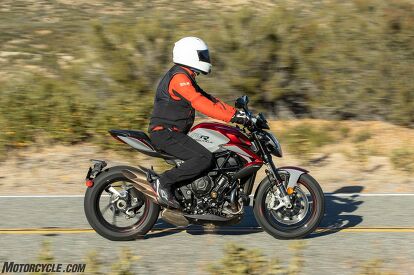
- Helmet: Arai Regent-X
- Communicator: Cardo PackTalk Edge
- Jacket: Alpinestars Tailwind Air WP
- Airbag: Alpinestars Tech-Air 3
- Pants: Alpinestars Copper v3 Riding Jeans
- Gloves: Alpinestars Sp-8 V3 Air
- Boots: Alpinestars Faster 3 Rideknit
Troy's Track Gear

- Helmet: Arai Corsair-X Shogun
- Leathers: Alpinestars GP Tech v4
- Airbag: Alpinestars Tech-Air 5
- Gloves: Alpinestars GP Tech v2
- Boots: Alpinestars Supertech R Vented
Specifications | Ducati Streetfighter V2 | KTM 890 Duke R | MV Agusta Brutale 800RR | Triumph Street Triple 765 RS |
|---|---|---|---|---|
Price | $17,995 | $12,949 | $19,998 | $12,595 |
Engine Type | 955cc Superquadro: 90 ° V2, liquid-cooled | 889cc 2-cylinder 4-stroke in-line engine, water-cooled | 798cc Three cylinders, 4 stroke, 12 valves | 765cc Liquid-cooled, 12 valve, DOHC, inline 3-cylinder |
Valve Train | Desmodromic 4 valves per cylinder | DOHC, 4 valves per cylinder controlled via cam lever | DOHC with mechanical chain tensioner and DLC tappet | DOHC |
Bore x Stroke | 100 mm x 60.8 mm | 90.7 mm x 68.8 mm | 79.0 mm x 54.3 mm | 78.0 mm x 53.4 mm |
Compression Ratio | 12.5:1 | 13.5:1 | 13.3:1 | 12.54:1 |
Horsepower | 129.9 hp at 10,300 rpm | 108.3 hp at 8,800 rpm | 119.2 hp at 12,900 rpm | 114.2 at 11,800 rpm |
Torque | 69.1 lb-ft. at 8,600 rpm | 69.7 lb-ft. at 7,500 rpm | 55.4 lb-ft. at 10,100 rpm | 54.4 lb-ft. at 9,400 rpm |
Induction | Electronic fuel injection system. Twin injectors per cylinder. Full ride-by-wire elliptical throttle bodies | Electronic fuel injection | Integrated ignition-injection system MVICS 2.1 (Motor & Vehicle Integrated Control System) with six injectors. Engine control unit Eldor Nemo 2.1. | Electronic fuel injection |
Final Drive | Chain | Chain | Chain | Chain |
Transmission | 6-speed with Ducati Quick Shift (DQS) up/down EVO 2 | 6-gear transmission, claw shifted | Cassette style six-speed, constant mesh transmission with MV EAS 3.0 (Electronically Assisted Shift Up & Down) | 6-speed, constant mesh |
Clutch | Hydraulically controlled slipper and self-servo wet multiplate clutch. Self-bleeding master cylinder | Slipper clutch in oil bath/mechanically operated | Multi-disk wet clutch with hydraulic actuation and back torque limiting device | Wet, multiplate slipper clutch |
Front Suspension | Fully adjustable Showa BPF fork. 43 mm chromed inner tubes | WP APEX 3343 with adjustable compression and rebound damping; 5.5 inches of travel. | Marzocchi aluminum 43mm inverted telescopic hydraulic fork with DLC treatment, anodized fork legs and having rebound- compression damping and spring preload external and separate adjustment; 4.9 inches of travel. | Showa 41 mm upside down Big Piston Forks (BPF), adjustable compression and rebound damping, and preload adjustment. 4.5 inches of travel |
Rear Suspension | Fully adjustable Sachs unit. Aluminum single-sided swingarm | WP APEX 5746 with adjustable high- and low-speed compression, rebound, and preload; 5.9 inches of travel. | Progressive, Sachs single shock absorber with rebound and compression damping and spring preload adjustment; 5.1 inches of travel. | Öhlins STX40 piggyback reservoir monoshock, adjustable compression and rebound damping, and preload adjustment. 5.2 inches of travel. |
Front Brake | Dual 320mm rotors, Dual Brembo Monobloc M4.32 4-piston calipers with Bosch Cornering ABS EVO. Self-bleeding master cylinder | Dual 320mm rotors, Brembo Stylema Monobloc four-piston, radially mounted caliper | Dual Brembo radial-type 4 pistons calipers with 320 mm steel braking disc | Twin 310 mm floating discs, Brembo Stylema 4-piston radial monobloc calipers, OC-ABS, Brembo MCS radial master cylinder |
Rear Brake | 245 mm disc, 2-piston caliper with Bosch Cornering ABS EVO | Brembo single-piston floating caliper, brake disc | Single Brembo with 2-piston caliper with 220 mm steel disc | Single 220 mm disc, Brembo single piston caliper, OC-ABS |
Front Tire | Pirelli Diablo Rosso IV 120/70 ZR17M | Michelin Power Cup 2 120/70 ZR17 | 120/70-ZR17 | 120/70 ZR17 |
Rear Tire | Pirelli Diablo Rosso IV 180/60 ZR17M | Michelin Power Cup 2 180/55 ZR17 | 180/55-ZR17 | 180/55 ZR17 |
Rake/Trail | 24° / 3.7 inches | 24.3° / 3.9 inches | NA / 4.1 inches | 23.2° / 3.8 inches |
Seat Height | 33.3 inches | 32.8 inches | 32.7 inches | 32.9 inches |
Wheelbase | 57.7 inches | 58.35 ± 0.59 inches | 55.1 inches | 55.1 inches |
Fuel Capacity | 4.5 gallons | 3.7 gallons | 4.4 gallons | 4.0 gallons |
MPG | ||||
Curb Weight | 457 lbs | 411 lbs | 447 lbs | 413 lbs |
We are committed to finding, researching, and recommending the best products. We earn commissions from purchases you make using the retail links in our product reviews. Learn more about how this works.
Become a Motorcycle.com insider. Get the latest motorcycle news first by subscribing to our newsletter here.

Troy's been riding motorcycles and writing about them since 2006, getting his start at Rider Magazine. From there, he moved to Sport Rider Magazine before finally landing at Motorcycle.com in 2011. A lifelong gearhead who didn't fully immerse himself in motorcycles until his teenage years, Troy's interests have always been in technology, performance, and going fast. Naturally, racing was the perfect avenue to combine all three. Troy has been racing nearly as long as he's been riding and has competed at the AMA national level. He's also won multiple club races throughout the country, culminating in a Utah Sport Bike Association championship in 2011. He has been invited as a guest instructor for the Yamaha Champions Riding School, and when he's not out riding, he's either wrenching on bikes or watching MotoGP.
More by Troy Siahaan

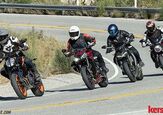


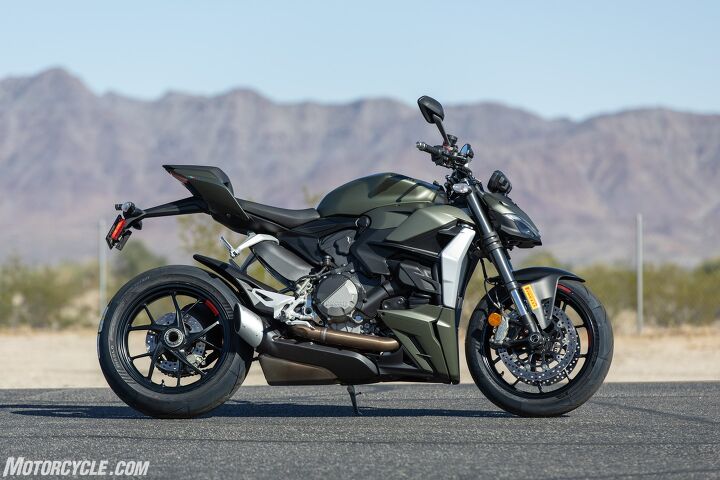
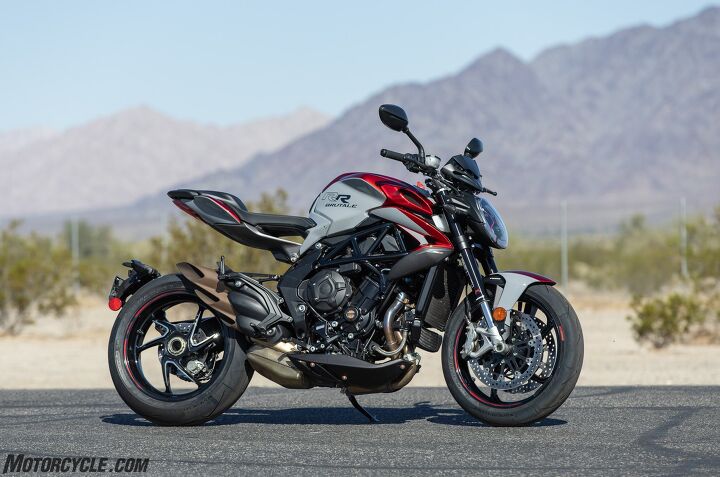

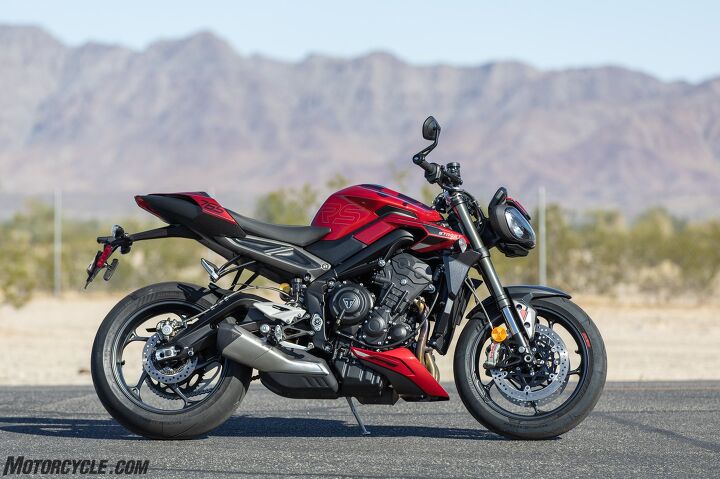





















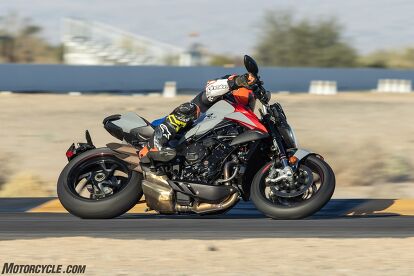
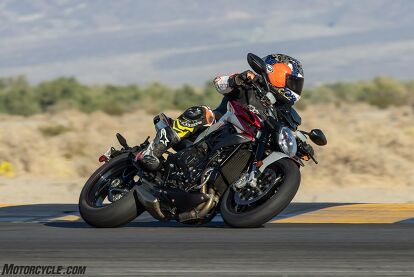


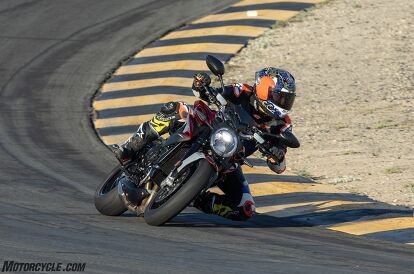



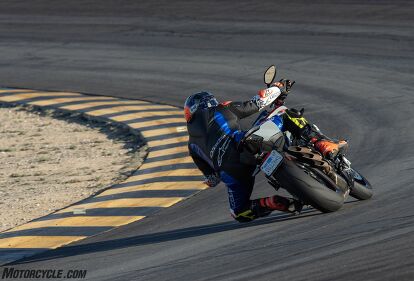








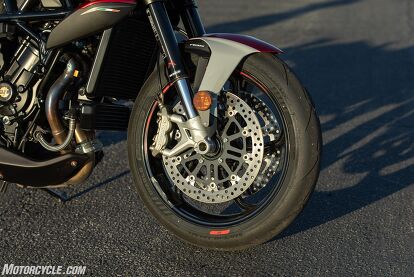




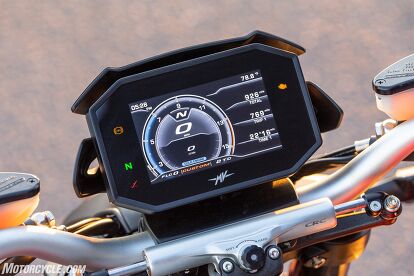
















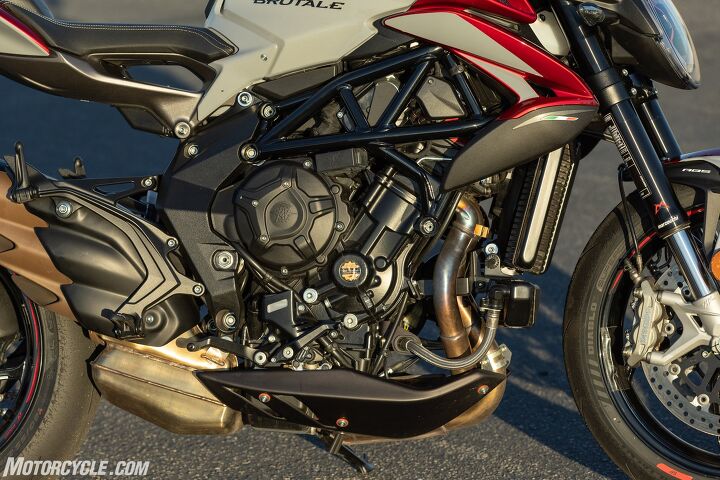













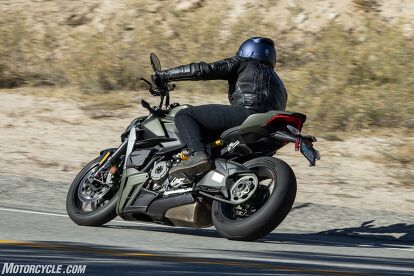

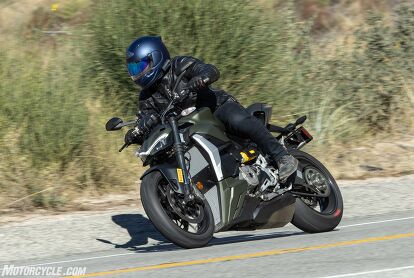










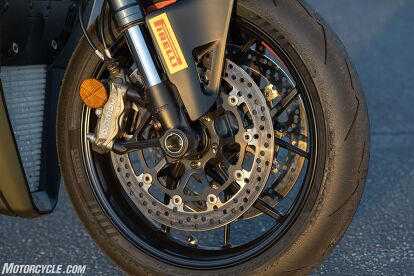


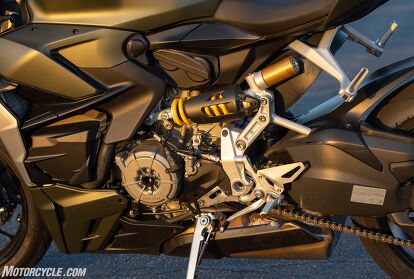






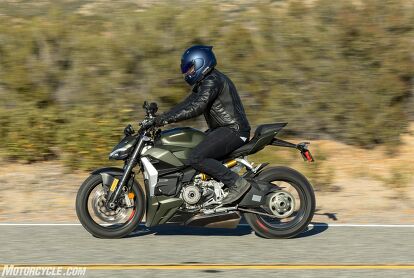




















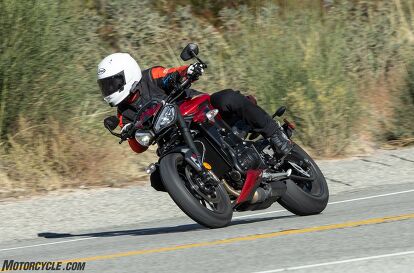




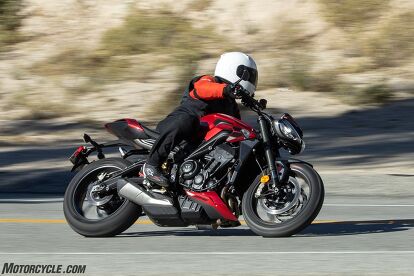










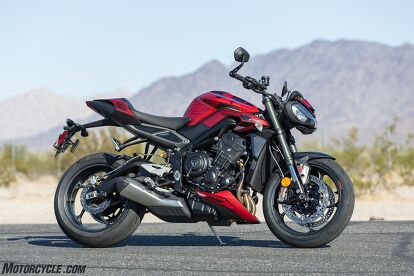





















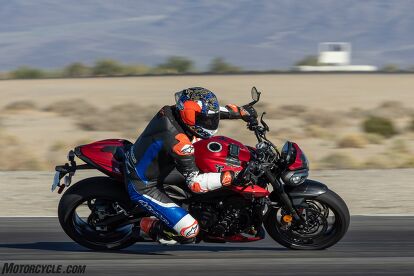



















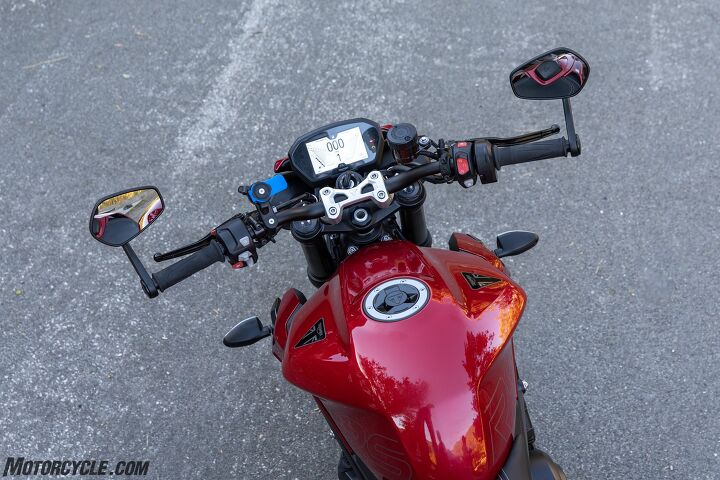










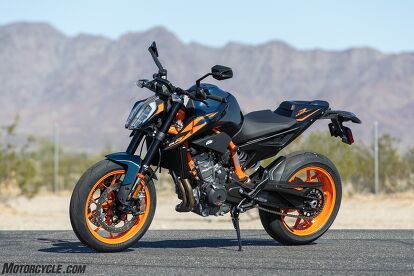














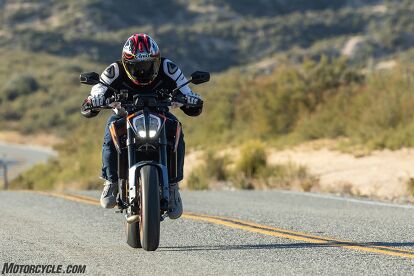


















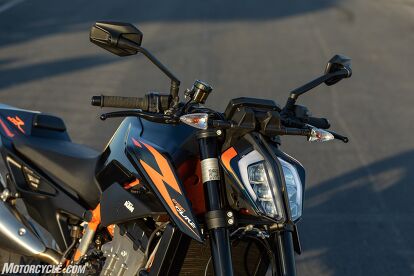

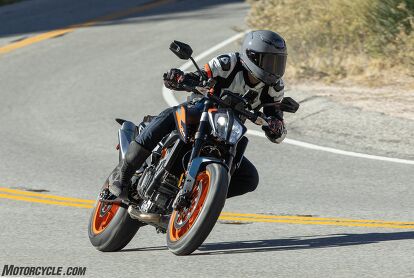


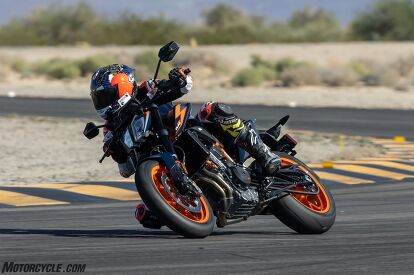





















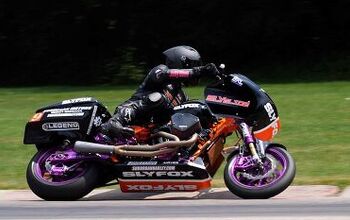












Comments
Join the conversation
I chose the Street Triple R over the RS specifically because of the dash. I'm not watching movies on it, just checking the gauges.
I'd take the Triumph for a reasonably priced all-arounder.